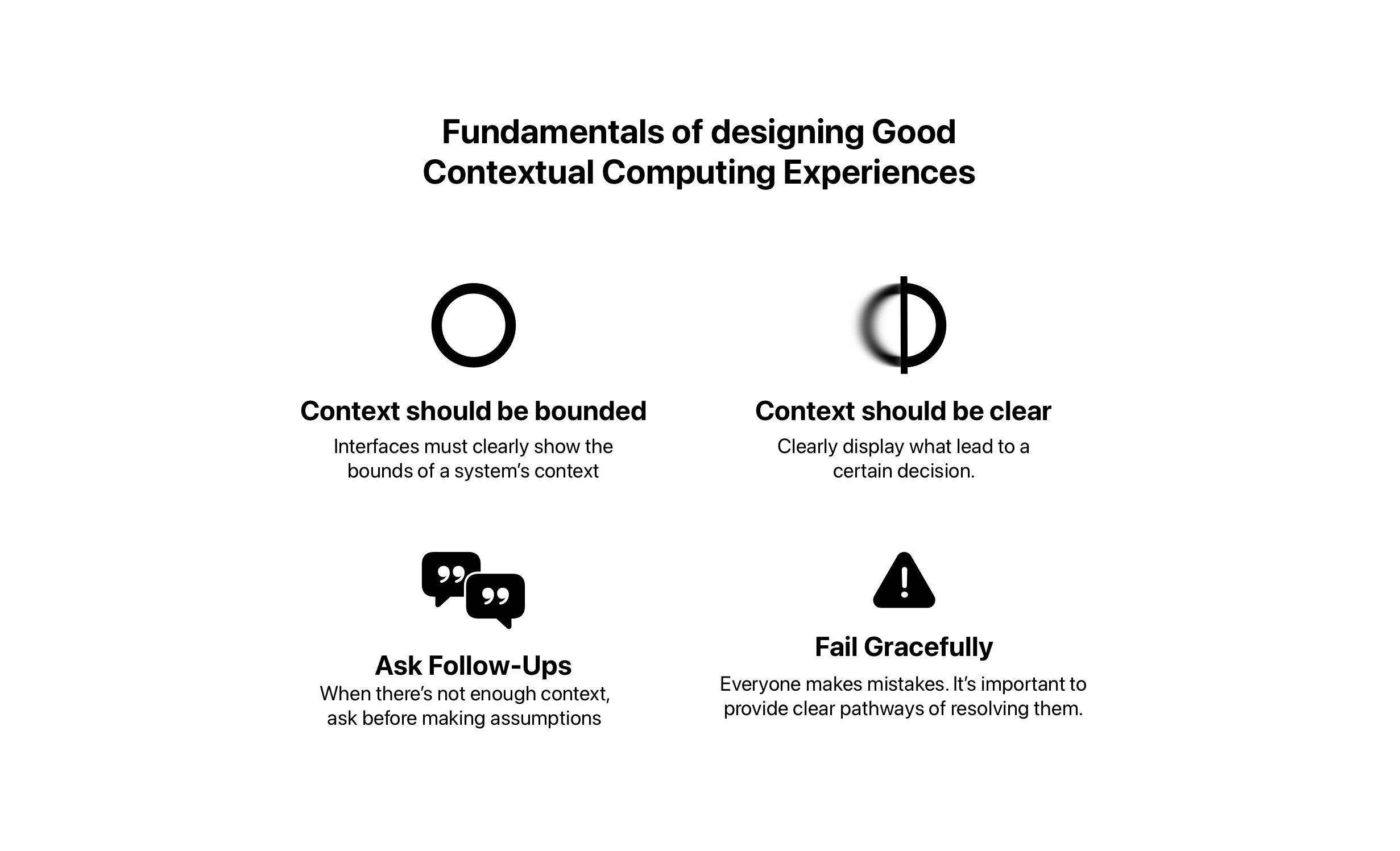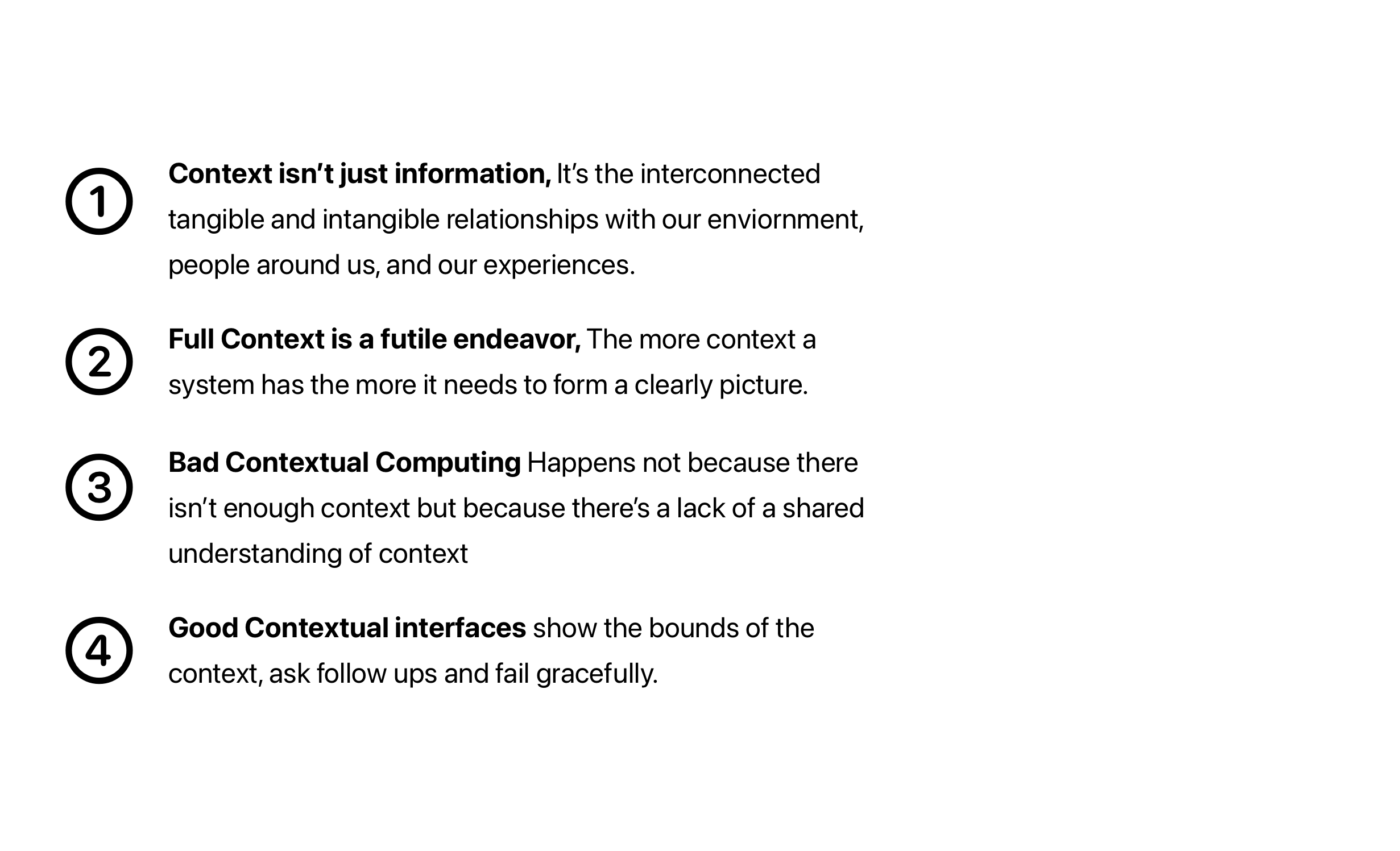A Framework for Shared Context
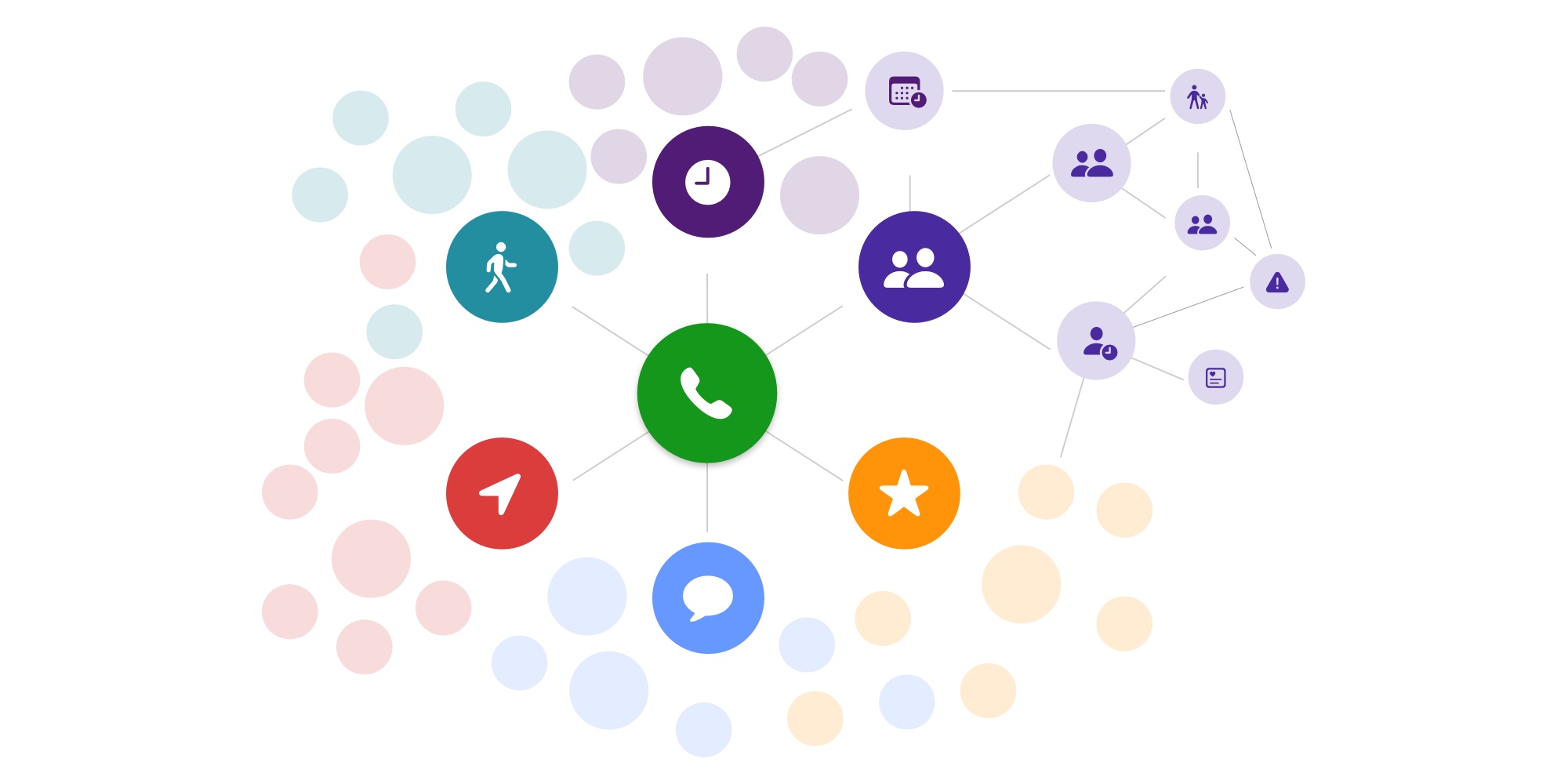
Contextual computing experiences don’t fail because there’s not enough context. They fail because there’s not enough shared understanding of context. If the person using the computer knows and understands what the computer knows about them to perform an action, or in design lingo, “the UI’s mental models match the user’s mental models” the experiences are better.
Through this framework I try to develop strategies for getting the "context" in contextual computing right.
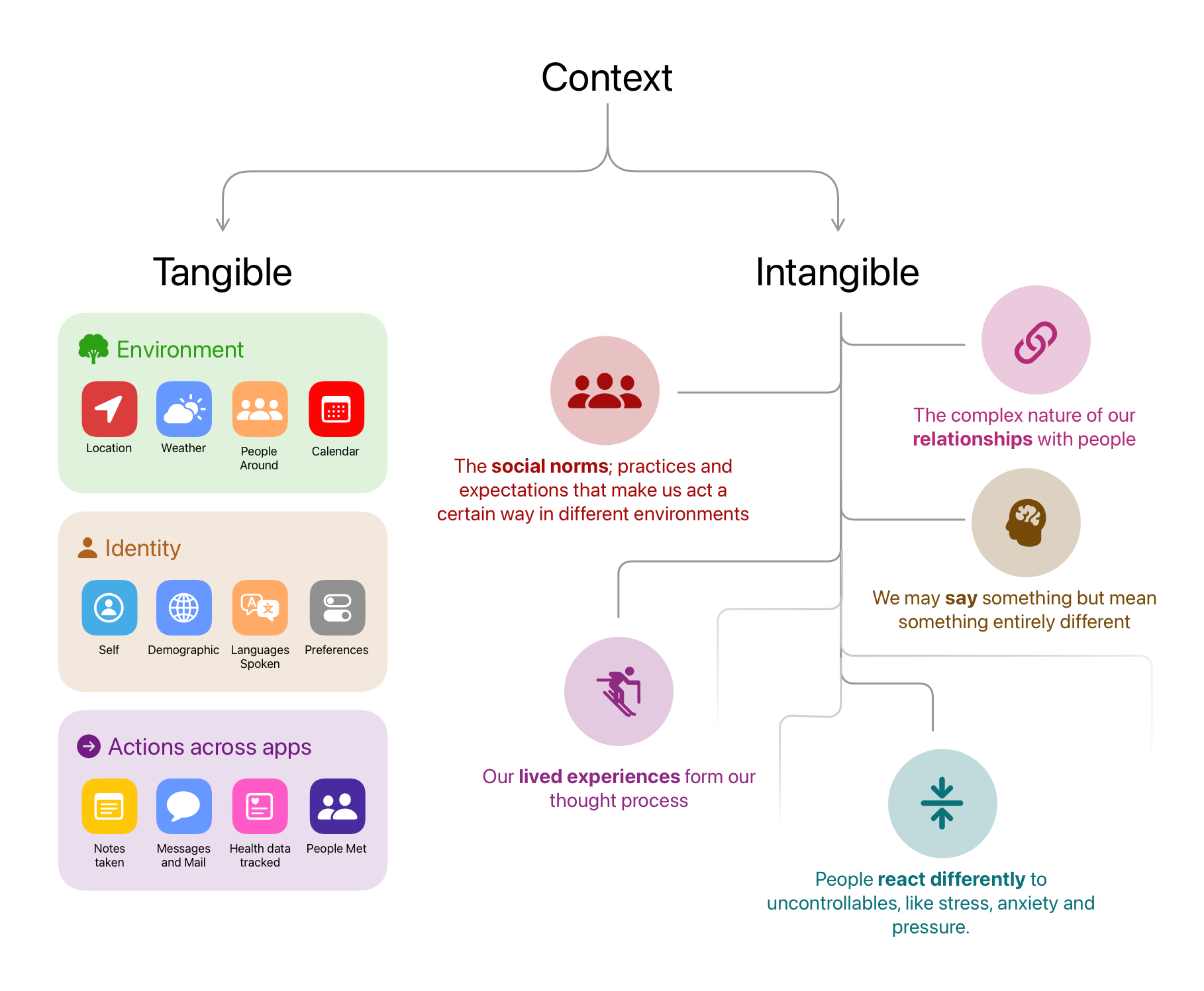
Context isn't just information
It’s the interconnected tangible and intangible relationships with our environment, people around us, and our experiences.
There’s the tangible personal context, that forms a major part of contextual computing’s discussion today; it’s your environment (location, weather, people you’re around with), your identity (information about you, your demographic, languages you speak, your preferences), your actions across (a trail of notes you make, your email, you calendar, contacts, and actions you take across different services).
But the tangible context is only part of the story, there’s also the intangible context that governs our actions. The social norms; practices and expectations that make us act a certain way, in certain conditions. We may say something but mean something else, our lived experiences form our thought process, they change how we act under different conditions; some people handle pressure situations differently from others, when I am acting under stress, that context matters in my interactions with the computer.
The Intangible Context is just as important as our tangible context in our usage of computers and other tools. It’s far more difficult for a personal computer to understand the intangible cues and context. So the picture of our context may always remain largely incomplete, even if we somehow gather as much context as possible.

Full Context is a futile Endeavor
The more context a system has the more it needs to form a clearly picture.
Each contextual element branches out into more questions, and the more context the system gets, the more it needs, to accurately display that suggestion. Mixing up on any one of those would result in an unsatisfying experience.
Moreover, this context is dynamic and changes based on location and what i am thinking about at that moment.
Sure, more context makes this suggestion helpful. It also makes it more prone to errors, it also makes it more prone to making a mistake.
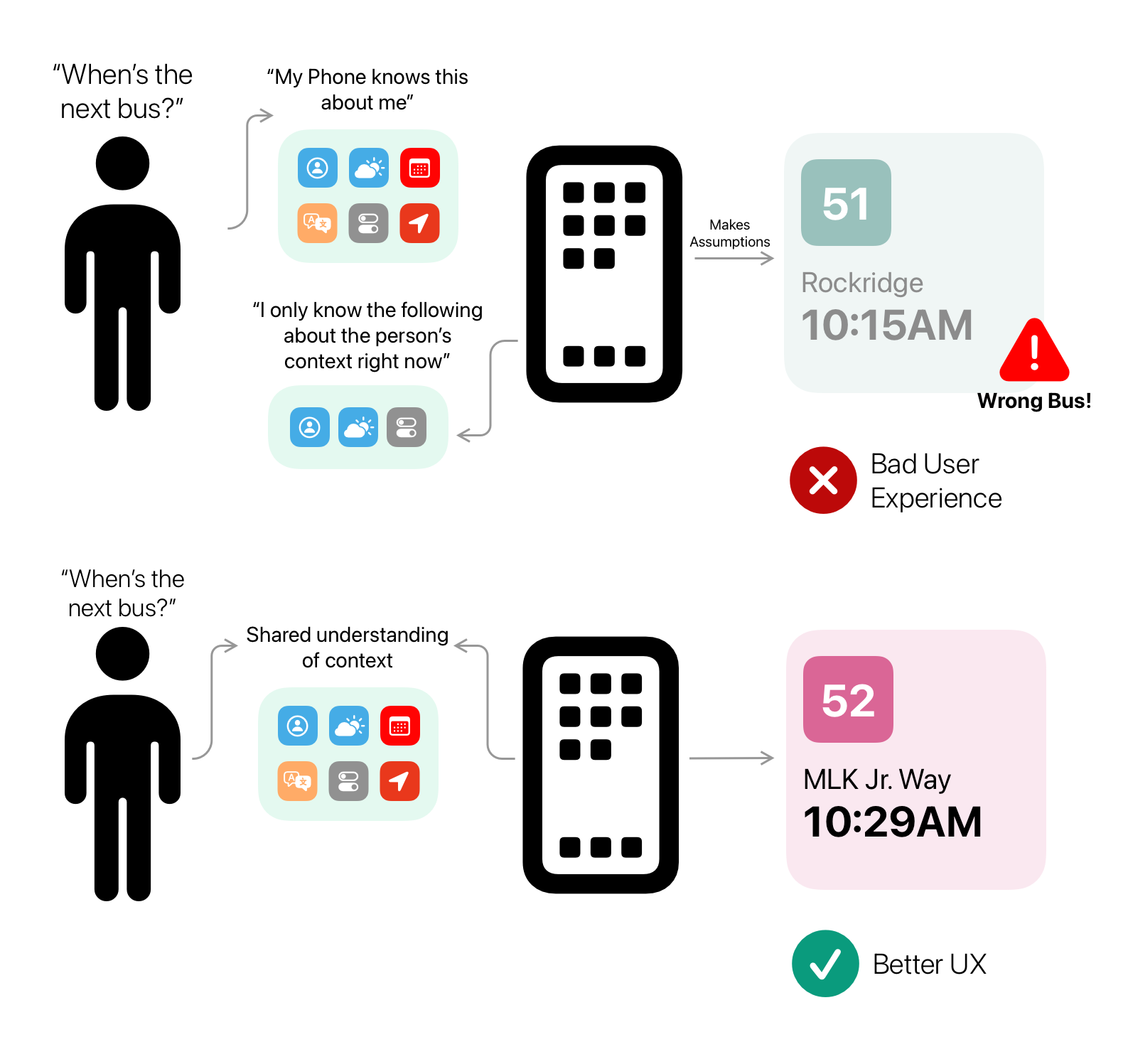
Bad Contextual Computing
Bad Contextual Computing Happens not because there isn’t enough context but because there’s a lack of a shared understanding of context
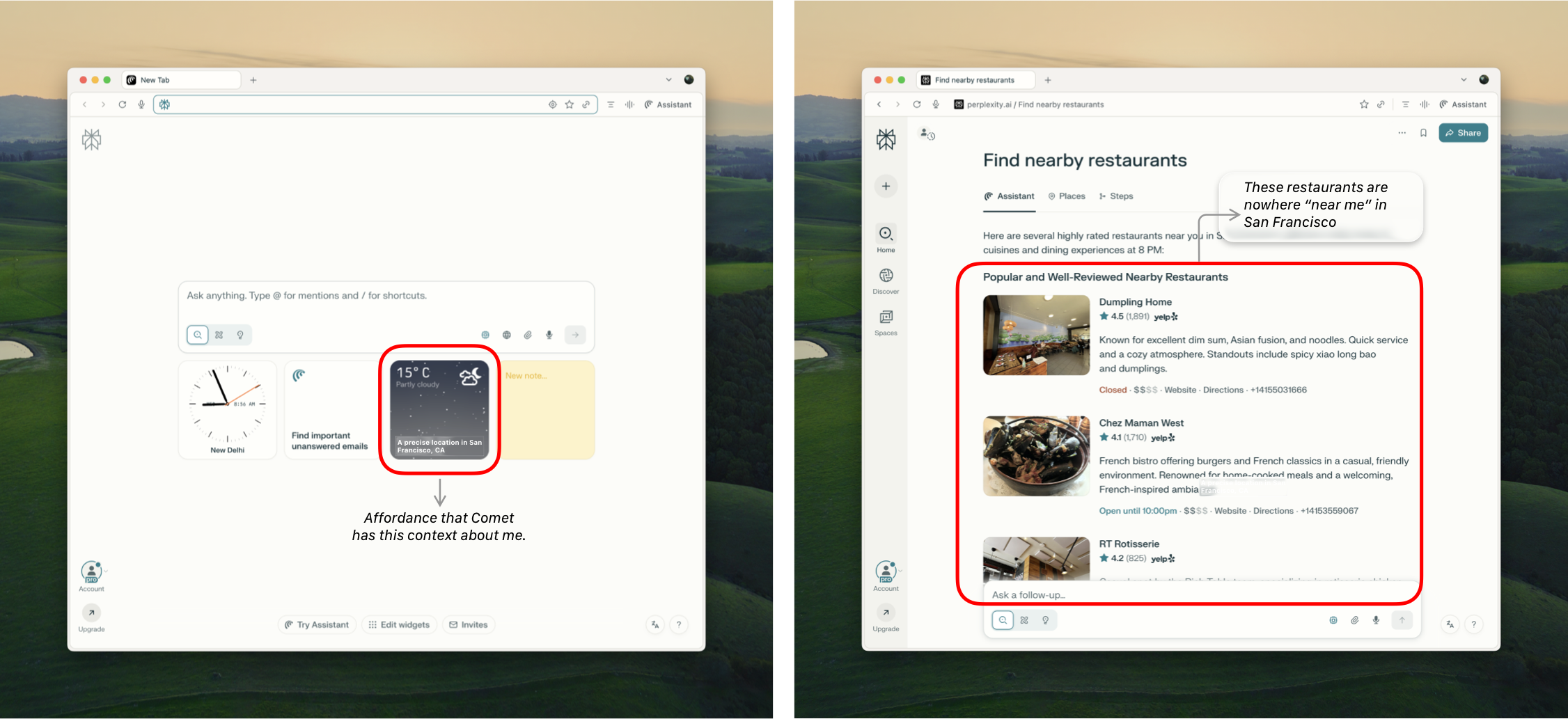
What’s missing from these examples is a shared understanding of context. When we communicate with our peers, there’s a shared understanding of context that’s established by the environment, our past relationship with one another and the circumstances we’re in.
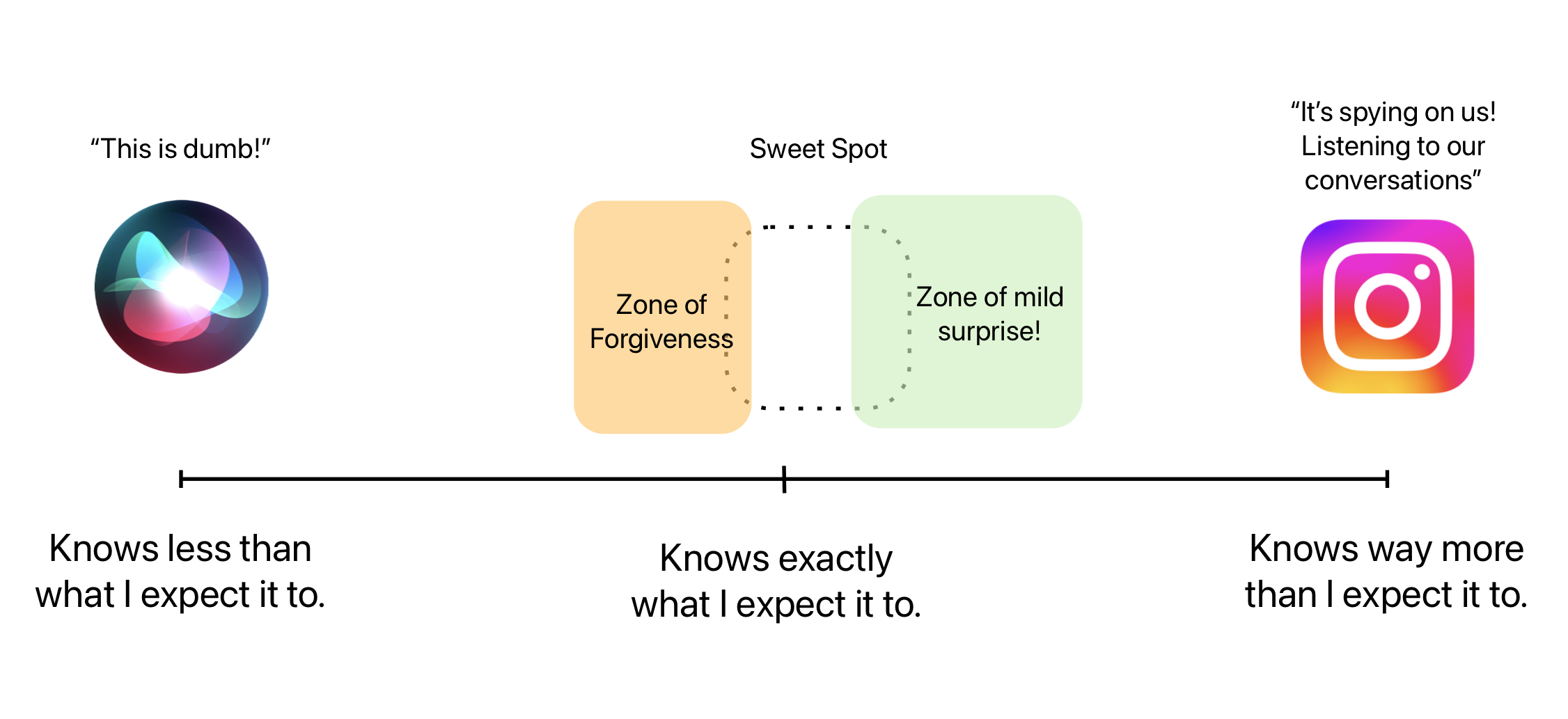
Fundamentals of designing Good Contextual Computing Experiences
